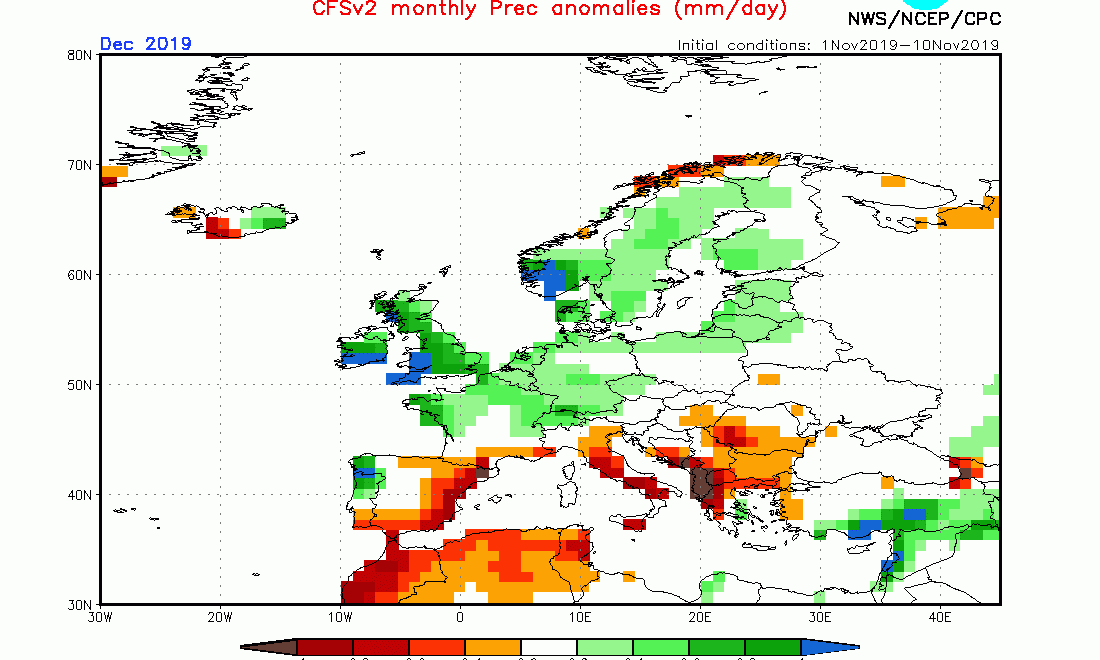
The past three months were all characterised by wetter than average weather. As of the end of November, we were 81.3 mm ahead of the 232.4 mm we normally receive from September 1st till November 30th. This is set to change, however, as the weather is set to turn drier this month. The consistent presence of high pressure from over north Africa will prevent low pressure systems from reaching us on most days. The few low pressure systems that do reach us are not expected to be intense. As a result, rainfall should not be plentiful this month. With a climate-average of 109.7 mm, December is normally the wettest month of the year. It will certainly not be the case this time round.
L-aħħar tlett xhur kienu kkaratteriżżati minn temp aktar imxarrab minn normal. Sa l-aħħar ta’ Novembru, konna rċivejna 81.3 mm aktar minn 232.4 mm, l-ammont li ssoltu nirċievu minn l-1 ta’ Settembru sa 30 ta’ Novembru. Dan se jinbidel, pero, hekk kif it-temp għandu jieħu xejra differenti dan ix-xahar. Il-preżenza konsistenti ta’ pressjoni għolja minn l-Afrika ta’ fuq se tkun qed tipprevjeni ħafna sistemi ta’ pressjoni baxxa minn li jilħquna. Il-ftit sistemi ta’ pressjoni baxxa li se jilħquna mhux mistennija jkunu intensi. Għalhekk, ix-xita dan ix-xahar ma għandiex tkun abbundanti https://southafrica-ed.com/kamagra-in-south-africa/. B’medja klimatika ta’ 109.7 mm, Diċembru huwa normalment l-aktar xahar imxarrab tas-sena. Dan żgur mhux se jkun il-każ din is-sena.


0 comments
Write a comment